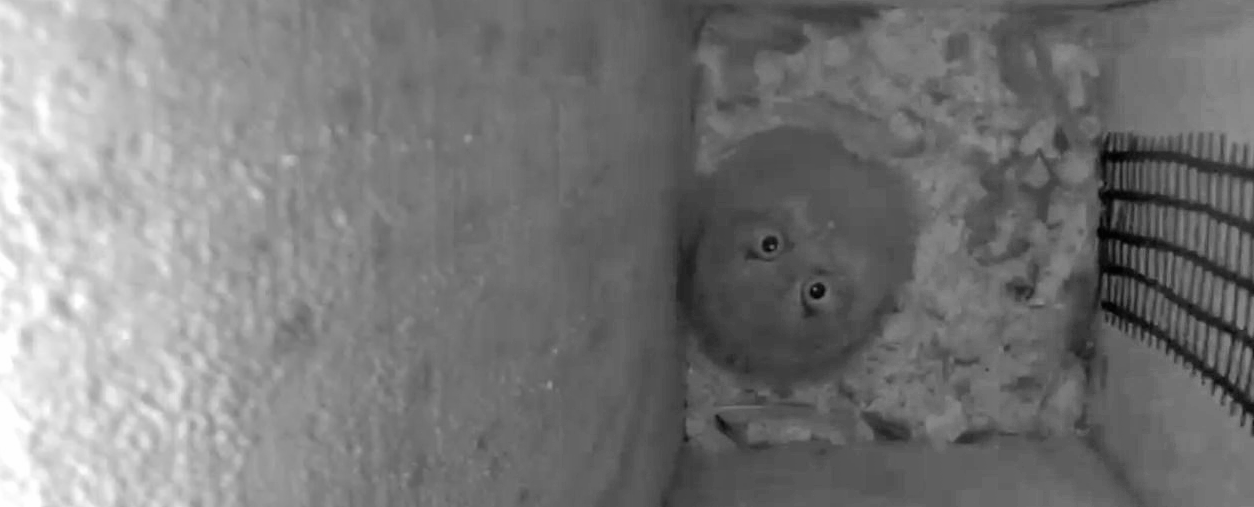 Photo ©
Robyn Bailey
Photo ©
Robyn Bailey
By Robyn Bailey, NestWatch project leader, and Ian Stewart, NestWatch contributor for Delaware Nature Society
With the use of home security cameras rising and a growing interest in streaming bird nests, more people are trying their hand at nest monitoring via security cameras powered by Wi-Fi at backyard nests. With recent improvements in wireless cameras, I recently invested in several for home use and was rewarded with intimate views of nesting Eastern Screech-Owls and Carolina Wrens! Meanwhile, NestWatch Chapter members over at Delaware Nature Society were experimenting with their own solar-powered nest box camera this season. As NestWatch contributor Ian Stewart and I compared notes, we decided to share some lessons learned with NestWatchers. The cameras we mention below were not gifted by any companies, and this post is not sponsored content (just our own opinions which we hope you find helpful).
Delaware Nature Society’s Setup
Nest box type: bluebird-style box
Camera model: Ring Stick Up Cam Solar, retails for $139.98
This summer the Delaware Nature Society was fortunate to receive a donation of a nest box modified to include a Ring video camera. You can read all about our special nest box in this blog which includes a selection of our favorite videos. This box was made larger than normal so it could accommodate the camera as well as a potential nest, and because of the extra weight we used two T-posts to hold it in place (though one sturdy pole would probably suffice). This model of Ring camera comes with a solar panel which plugs directly into it and charges the battery. The solar panel has quite a long cable so the box has a spool on the back to wrap the excess cable around. The solar panel provides enough power for our current setting of motion-detected recordings, typically activated by parents entering the box. We have not used the camera for continuous recording but suspect this higher use may drain the battery faster. Ring cameras can be powered by an outlet; you may be fortunate enough to have a nest box so close to your house that you can plug it in directly or use an extension cable, but beware that these cables can be a tripping hazard.
The Ring camera transmits images over the internet, so it needs to be within range of a Wi-Fi network. Our box is over 50 feet from a Wi-Fi router and has been working fine, though if your target box is further away you may need to use a Wi-Fi extender to boost the signal.
Once the Ring camera was in place, it was fairly easy to connect it to the internet so we could view the images on our computers and also our phones after downloading the Ring app. You can view live images without a subscription to Ring, but a subscription is required to save videos as well as share them. However, the subscription is not expensive and would only be required during the breeding season. It is easy to add users to your Ring camera so that others can watch the events unfolding within the box, and it is also easy to share videos of key events like hatching or fledging with friends and colleagues by just emailing them the weblink.
So far we are very happy with our Ring camera nest box and are very grateful to Rawnie Paradis, Frank Levy, and Ken Leister for constructing and donating it! We have obtained great videos of adult Tree Swallows incubating eggs and feeding nestlings and have been posting these updates on social media every few days. We have also seen great footage from a Ring camera installed in a bluebird nest. We believe this technology could be used to monitor a variety of nest box species, provided the camera is mounted securely in place and has access to a power supply and the internet. A world of possibilities awaits!
Robyn’s Home Setup
Nest box types: Eastern Screech-Owl box & Carolina Wren nest shelf
Camera model: Blink Outdoor (3rd Gen) Wireless 1080p Security Camera, retails for $99.99
I chose this camera model because it boasts battery life of up to two years, an important feature because I did not want to have to do battery changes while nests were active. The cameras were deployed on a newly-installed nest shelf and a screech-owl box, both out of reach of easy electricity. In the gallery below, you can see examples of typical daytime and nighttime image quality, with the cameras set on average quality and normal infrared intensity (image quality and infrared brightness could be turned up, but this shortens battery life).
I was nervous about depleting the battery in the owl box prematurely once I had regular visitors. Their nesting cycle is longer than that of Carolina Wrens, so I was more sparing in my owl viewing than I was in my wren-watching. The camera did last throughout the 80-day period from when the female owl first appeared through the fledging date, with modest viewing (i.e., 3-4 check-ins per day, not continuous streaming). This camera model also makes continuous streaming somewhat cumbersome by asking every minute or so if you want to continue watching, and a nonresponse turns off the stream (a helpful battery-saving feature). This may be a setting that is configurable, but I was concerned about the battery not lasting and so chose not to run the camera continuously. Several times I did receive alerts about my “high usage” of battery power. The alerts were helpful, but I had no knowledge of how fast I was using the battery, given that the device simply indicates “OK” for battery life, rather than offering a readout of the percent remaining.
Nevertheless, I still got great looks at my owl and wren families which were sufficient for reporting to NestWatch. Due to the side opening of the Carolina Wren nest, I did need to make 2-3 physical visits to the nest to check for egg-laying and hatchlings, which weren’t visible from the camera angle. However, the camera drastically reduced the number of times I had to climb past a rose bush to check on this nest. One thing I wished I could change was that the owls seemed to notice when I turned the camera on for viewing, and this was likely because the camera makes a slight sound when activated. You can turn off the status light so that no indicator light turns on, but I didn’t find any way to disable this, likely mechanical, sound. In any case, it didn’t seem to disturb the owls too much, but it did cause them to look up whenever the camera clicked on. The Carolina Wrens didn’t react to the camera coming on in any visible way.
The camera mounted easily to the roof of the owl nest box, and no modifications to the box were necessary. This outdoor camera requires a sync module (included) that you plug in indoors and which acts as a hub for up to 10 Blink devices. This model can work with Alexa, but I did not use this feature. I did use the optional subscription plan which lets you record and save clips in your Blink app for an additional monthly fee; without this subscription, you can only view the camera in live mode and clips won’t be saved (although you could take screenshots). Overall, the cameras and the Blink app worked relatively well on my home Wi-Fi from distances of approximately 100-200 feet, and monitoring the owl box and the Carolina Wren nest shelf was the highlight of my NestWatching season.
Final Considerations
Watching birds go through the whole nesting cycle is a lot of fun. If the camera is in place beforehand one can watch birds build their nests, lay and incubate their eggs, and rear their young until they fledge. These observations can all help add high quality data to NestWatch or be used in a research project. But it’s important to be aware that things sometimes go wrong, and to understand that not every nest or nestling is successful. Perhaps not all viewers will want to witness nature’s harsher realities, so use your best judgment when deciding whether to install a camera on focal nests.
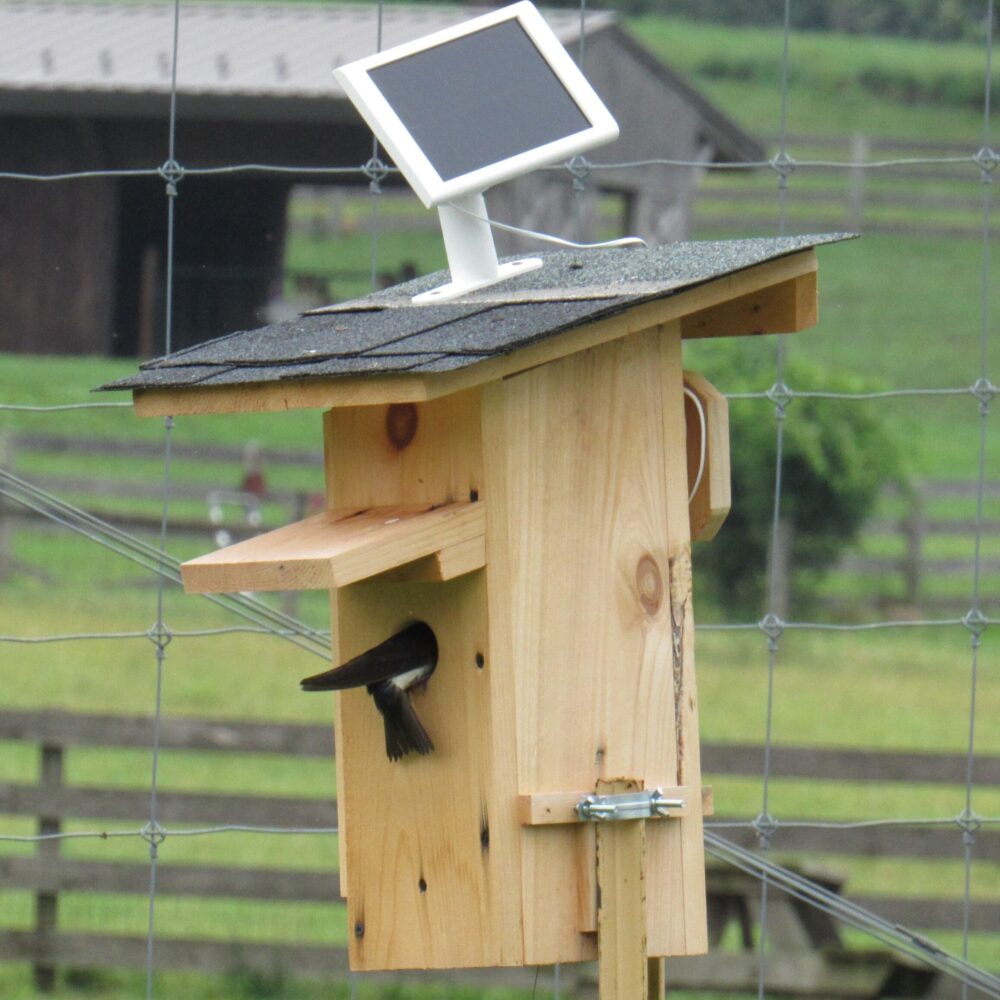
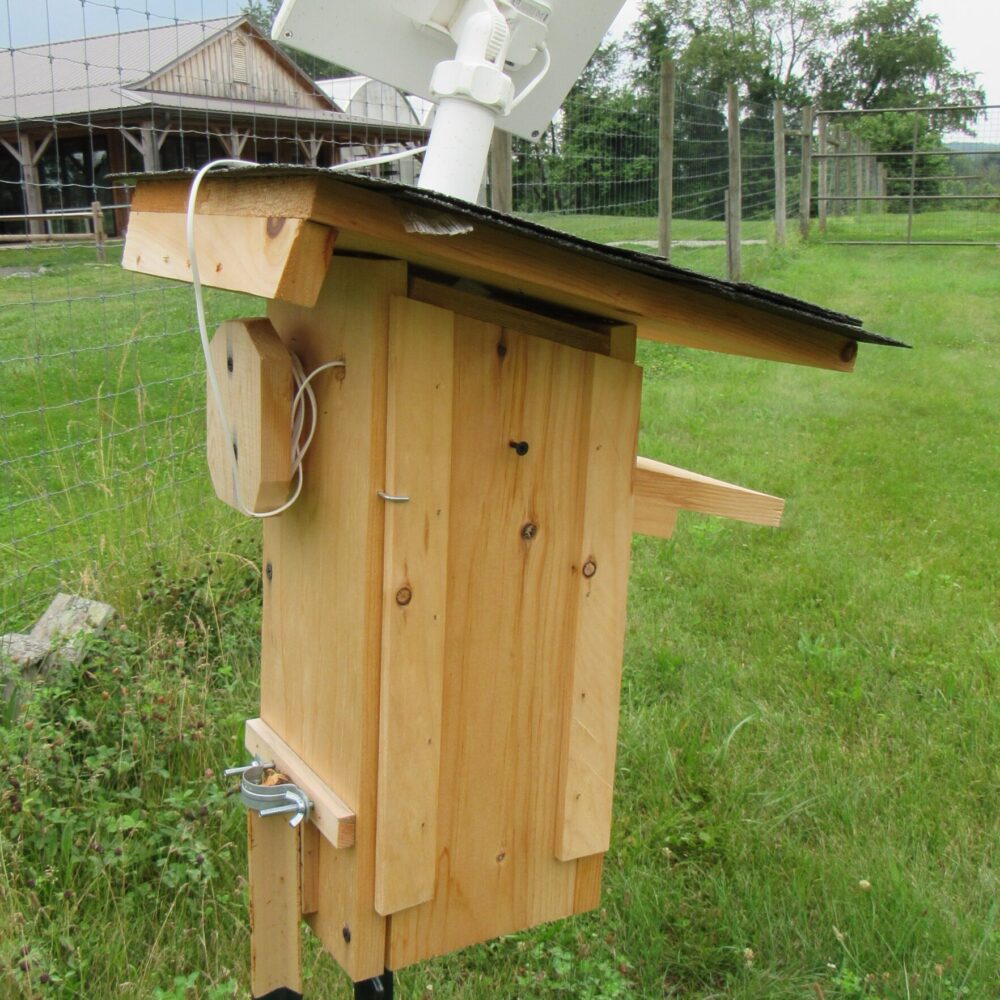
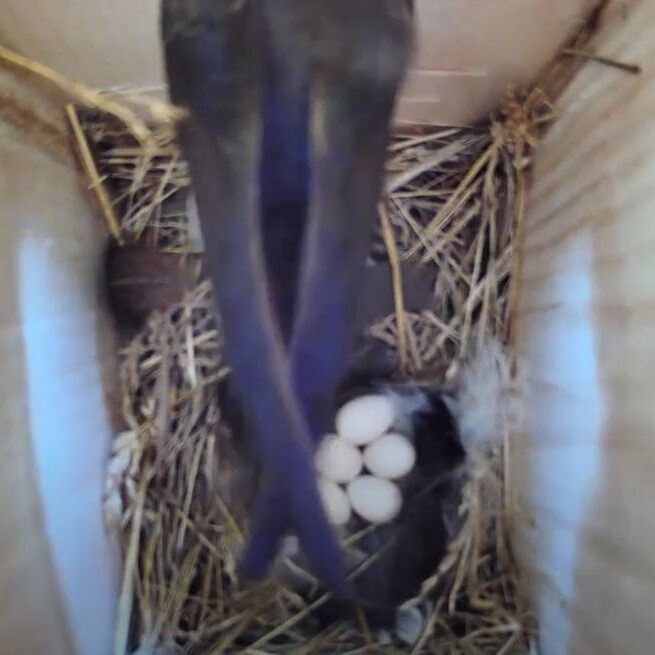
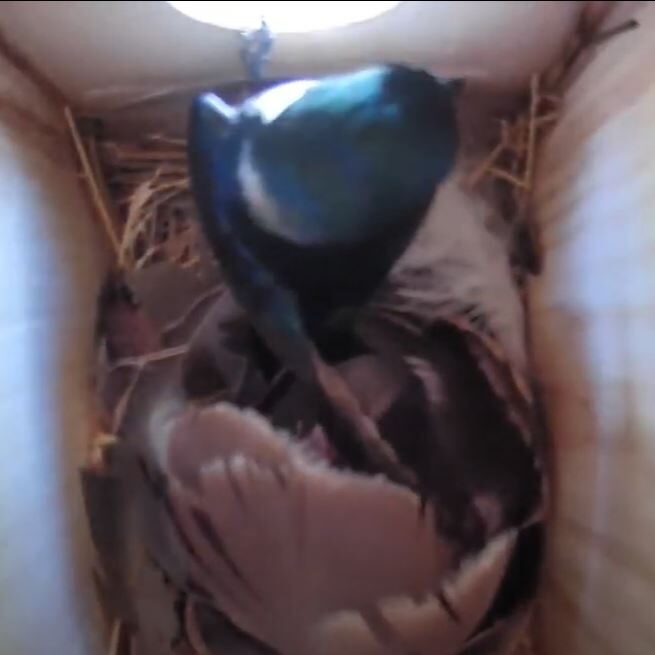
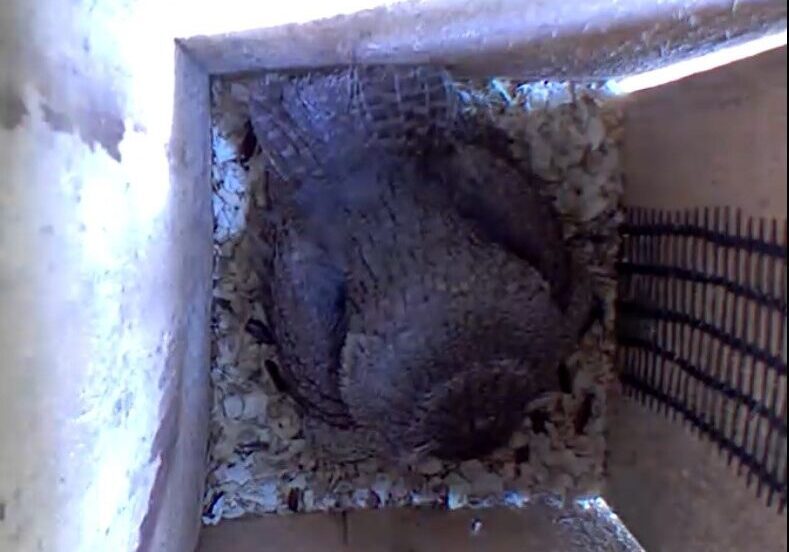
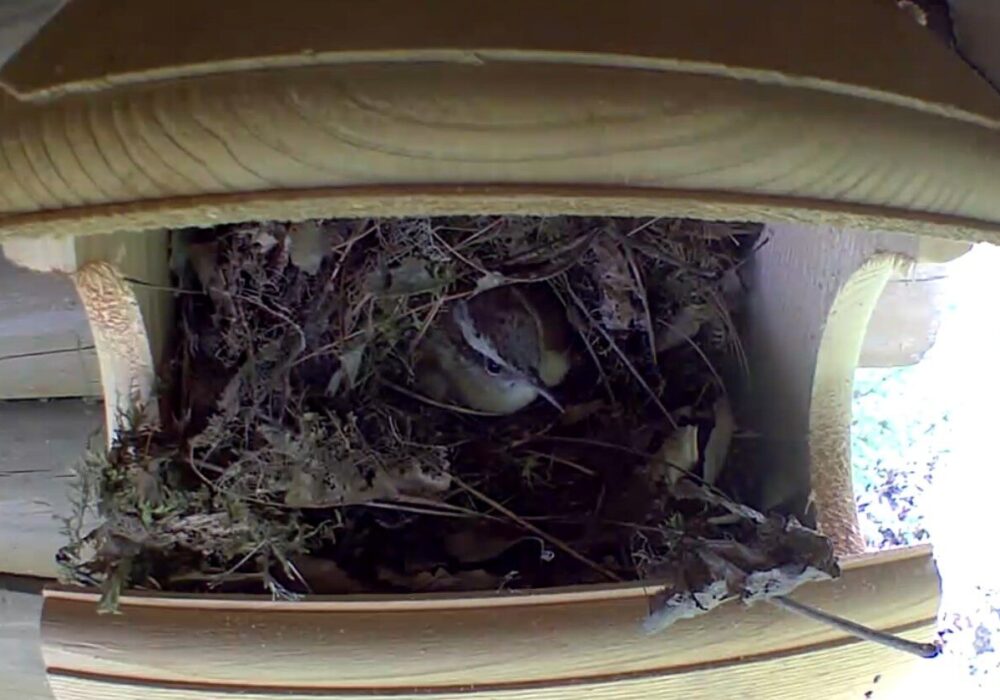
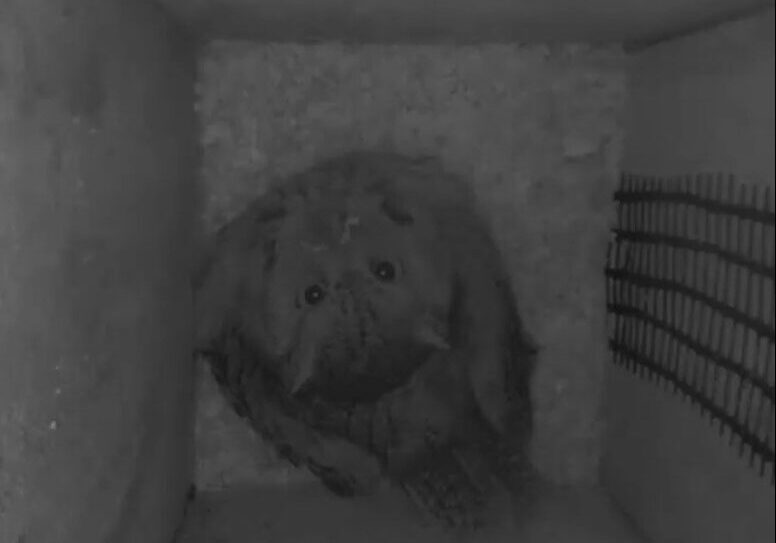
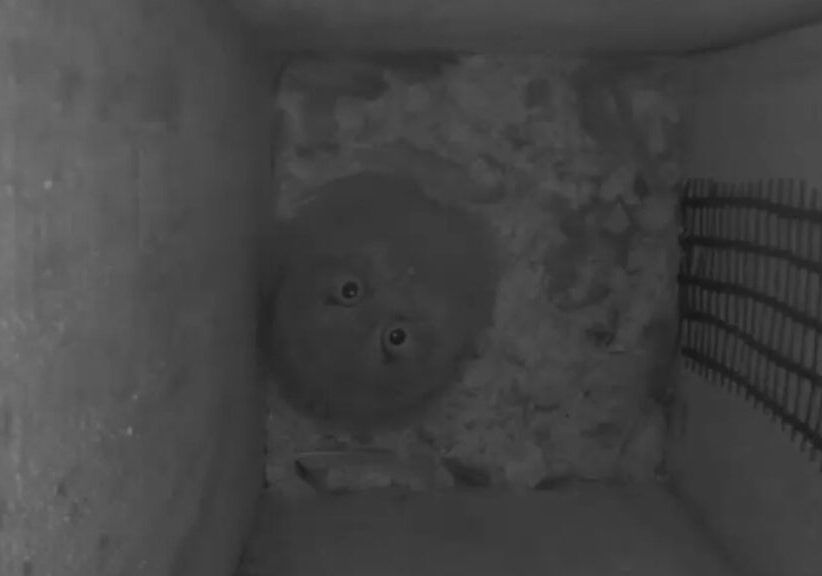
I have 3 blink cameras installed in three nest boxes and they are a great solution. I’ve great success watching 2 broods of titmice and 2 or bluebirds. I did not use the infrared setting not only for battery saving but the occupants can hear the transition from off to on. I extended my nestbox heights by about 3 inches and used a router to create a 1/4″ slot to slide in a piece of hardboard which has an area cut out in the middle for the camera lense and motion sensor. I also added ventilation holes in the upper story for the camera housing. This works very well and looking at the nestbbox you would never know it contains a camera. Great views from nest building, to egg laying to brood and fledge.
Hi Bill, how long do the batteries in your camera’s last?
Hi Jocelyn,
I too have been using the Blink wireless outdoor cameras. They have a 2 year replaceable battery. The cameras are motion activated, so to save on the batteries, I turn my cameras off during nest building and other times when the birds are frequenting the nest box. I’m on year 2 have not had to replace the batteries. Also it should be noted that these cameras have temperature sensors that will alert you to extremes in nest box temps.
I have 2 blink wireless cameras attached to solar powered panels, 1 in a feeder and now one in a blue bird house. If you have a lot of visitors, solar powered is the way to go and not expensive.
Good article. I would like to see a follow-up article on nest cams that will work in remote locations that do not have ac power or wifi, yet can still connect real-time to the internet. I suspect that such a setup would require solar power and a cellullar connection.
I’m testing a couple of cameras that can do this. Search for Bluetooth camera traps. Larger than the wifi security cameras but I’ve made a housing that will sit on top of an existing box. Powered by a small solar panel as well as batteries, The camera can be controlled using an app and all images downloaded to your device, so box disturbance is nil.
https://www.trailcameras.com.au/wireless-trail-cameras/100-garde-pro-e8-32mp-hd-wifi-solar-combo-pack.html
I purchased an extreme remote camera from Green Backyard. It operates with a car battery and has a 600 ft range. I also bought an HDMI converter so I can watch on my TV. I am going to install a solar battery charger. The battery lasts about a week although I recharge it after 4-5 days so it does not completely discharge. Works well. Customer support very good.
I live in Columbia SC and this weekend we are having a heatwave. The bluebird babies in my nest are not due to fledge for another 6 days. I am afraid they will die in this heat. Is there anything I can do?
There’s an excellent article “Heat Shielding for Bluebird Nestboxes” at http://www.sialis.org/heat.htm
General-purpose security cameras are set for optimum focus at several feet, whereas inside a nest box it is just inches. If the lens is threaded, you can open the camera and grab the lens (gently) with pliers and twist it counter-clockwise a tiny amount, about 1/8 of a turn, to change the focus closer. Note that this voids the warranty on your camera.
Tammy-my heart goes out to you. I have a bluebird nesting box in California. I always get help from California Bluebird Recovery. Most states have this. I see that there is a South Carolina Bluebird Society listed in the Journal of North American Bluebird Society. Contact person is Mike DeBruhl , contact phone number given is (803)641-2092. Also, any local wildlife rescue/rehab services in your area may help with general info. Best Wishes, Marilyn
If the nest box is in the shade and has adequate ventilation holes or slots, the birds should be fine. If sunlight falls directly on the box, find a way to shield it.
We’ve been using Wyze outdoor cam security cameras for several years. The one advantage of them is that you don’t need an optional subscription.
Yay or Wyze. Do you have a weather-proof power cord? I need to get one but recently they company was out of stock; will check again. Do you record or view live whenever you want to do a nestcheck?
I’ve only used my camera indoors to watch my dog. Any advice for using outdoors will be appreciated.
Thank you nestwatch,
Interesting information. The “tips on installing a nest box camera” doesn’t work?
Terry
Thank you for notifying us; we have fixed the link now.
Thankyou so much for this information. I have been seeking out options for nestbox cameras at a golf course where I have 29 boxes. I think I could set up a couple of camera boxes, with a wifi booster, and observe a Western Bluebird and Tree Swallow rear their young. Ultimately, I am hoping that smaller cameras with smaller solar chargers, with battery backup, will be marketed at a reasonable cost, to allow more cameras in more boxes. It would be extremely helpful to understand why some nests fail and these might lend some insight into that issue.
PoE (Power over Ethernet) combines the power supply with a continuous data connection using a single 1/8″ wire up to 100 m (300+ ft) long to your nesting box. No WiFi or separate power supply needed. The disadvantage is that you need a wire pathway from your router to the nest box, for example, through a window or under a garage door. For details, see my write-up at https://ataridogdaze.com/science/birds/nestcam-install.html
The one time I tried this, a squirrel immediately chewed through the cable. Just something to be aware of if you live in a squirrely area like I do.
I’ve been trialling 2 models of Bluetooth camera traps for nest box monitoring. Both come with solar panels for keeping the batteries charged. Camera settings and image download can be done, using an app, from a distance (up to 30m) and no wifi networks are required. We’re going to test them in a nearby national park where we have 70 nest boxes set up.
I’ve been using several brands of wifi and PoE cameras to document the eastern screech owl families in our yard. Green Backyard PoE cameras inside the owl houses and Chortau and Wyze Cam v3 outside. I mount those on ABS poles to locate them in optimal spots once I establish the parent owls’ routines during nesting season. I’ve been really happy with the quality images I get with all three brands. Videos posted here: https://youtube.com/@MegascopsManorsOwlHouses
Absolutely loving the convenience of Wi-Fi enabled security cameras for nest monitoring! Being able to check on my feathered friends from anywhere is such a joy. Thanks for highlighting this modern approach to keeping an eye on nature.